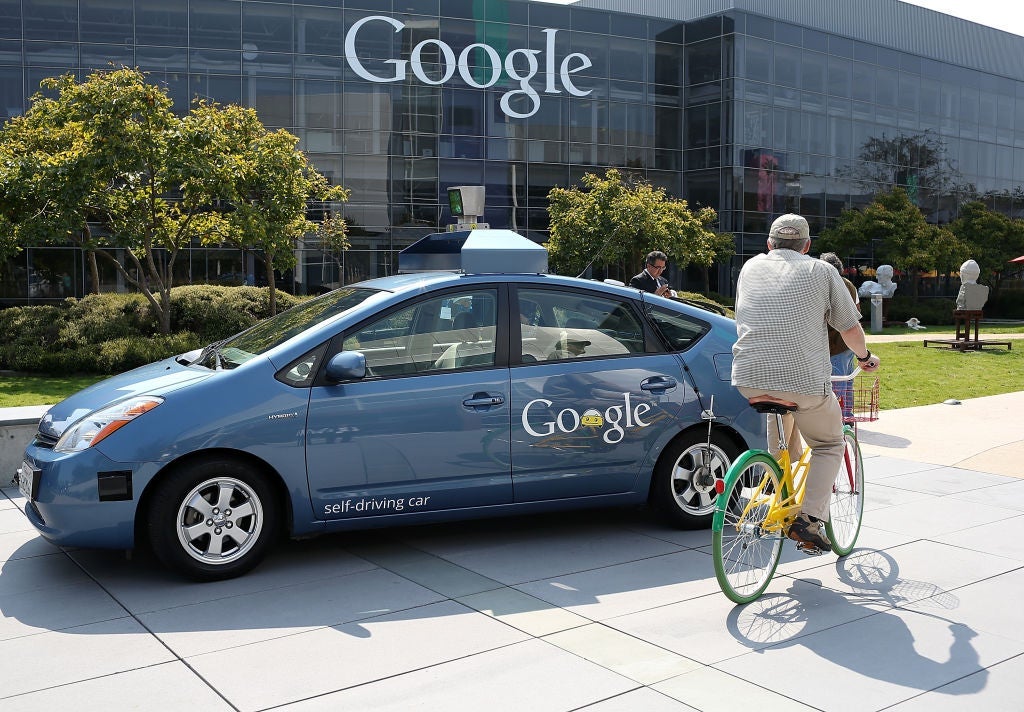

As the Covid-19 pandemic started to wreak havoc around the world earlier in 2020, innovation took centre stage. As the virus paralysed country after country, the way people lived and worked drastically altered almost overnight, enabled largely by innovations that have developed since the last recession of 2008, after which global research and development (R&D) investment strongly rebounded.
Until the current crisis hit, innovation was flourishing. In fact, in 2018 global R&D spend grew by 5.2%, significantly faster than GDP growth, according to the World Intellectual Property Organisation (WIPO).
So, from this trajectory the question remains: can the world innovate itself out of this crisis?
Defining innovation
Any study of the macroeconomics of innovation contends with the problem of definition. Innovation is an extraordinarily broad concept, notoriously difficult to ground in metrics, despite being widely acknowledged as a key driver of economic growth.
Advanced manufacturing, software services, agriculture, financial services, power and energy all benefit from innovative approaches to problem solving. However, return on investment is hard to quantify on the free market, especially when early-stage R&D evinces a tenuous correlation with outcomes.
How well do you really know your competitors?
Access the most comprehensive Company Profiles on the market, powered by GlobalData. Save hours of research. Gain competitive edge.

Thank you!
Your download email will arrive shortly
Not ready to buy yet? Download a free sample
We are confident about the unique quality of our Company Profiles. However, we want you to make the most beneficial decision for your business, so we offer a free sample that you can download by submitting the below form
By GlobalDataAnd the good news is…
A clear correlation between economic development and investment in innovation was particularly marked after the last global recession of 2008, where both global GDP and investment in R&D rose in tandem, with R&D growth eventually outpacing GDP by mid-2010.
While the investment pipeline across most sectors has dried up in the short term and global cross-border investment is predicted to fall by a staggering 30–40% in 2020, according to the UN Conference on Trade and Development, the recognition that innovation can drive growth and ensure future competitiveness may afford it a reprieve among boardroom executives and government policymakers designing national growth strategies.
Cash-rich technology giants in particular will be able to capitalise on accelerated digitisation triggered by the pandemic. Similarly, the current crisis may serve to accelerate innovation in the pharmaceutical, biotechnology and health sectors. However, this best-case scenario will only be realised if governments and the private sector continue to make innovation a priority despite economic turmoil.
Crises serve as inflection points for investment in innovation, according to JP Rangaswami, former chief scientist at Salesforce and BT, and former chief data officer at Deutsche Bank – but innovation only becomes relevant with adoption.
“We have probably learned more from the accelerated adoption of technology in telemedicine, remote schooling and working from home during the past six months than we have in the past six years,” says Rangaswami. “It is important to maintain this momentum of change, and [this is] the most important time for government and industry to invest.”
Of the balance between private and public funding, Rangaswami believes this is sector-dependent.
“Government is essential in the mix for ensuring digital inclusion for infrastructure and health tech, for example, but industry can pursue market-driven innovations more effectively,” he adds.
What can governments do?
The private sector is widely considered to be the main force driving innovation, but the role of policymakers and public research institutions is often overlooked as innovation advances tend to gain visibility once they reach the free market and global business hubs start to form. Public sector projects fostering early-stage innovation have produced some of the world’s most groundbreaking technology, such as the internet and CERN’s Large Hadron Collider. So, what can policymakers do to foster innovation?
Upon the release of the WIPO’s 2020 Global Innovation Index, director-general Francis Gurry pointed out that the real policy challenge is to make science and technology capacity a priority. This becomes more difficult in developing countries where population welfare concerns are a more immediate concern.
However, the greatest policy challenge is innovation as a long-term objective.
“When you look at countries that have dramatically improved their innovation performance, it has taken more than 30 years,” said Gurry. “South Korea, Singapore, Japan after the Second World War, [and] China have all taken about 30–40 years, well beyond an election cycle.”
Countries that have succeeded have reached a bipartisan consensus about innovation as a key driver of economic growth. This is particularly difficult in developing countries where political systems may not be as robust, according to Gurry.
High-income economies are consistently the most innovative in the world, with China the only middle-income country ranked in the top ten countries in the WIPO 2020 Global Innovation Index. Switzerland, Sweden and the US rank first, second and third, respectively.
However, there has been a steady democratisation of innovation expenditures across global economies over the past decade, according to WIPO economist and co-author of its Global Innovation Index, Sacha Wunsch-Vincent. The pandemic threatens to reverse this trend with the potential investment shortfall likely to affect developing economies disproportionately, he adds.
Foreign direct investment (FDI) has been instrumental in building innovation capacities around the world, says Wunsch-Vincent.
“Research shows that FDI investment helps domestic firms, suppliers and even actors of the domestic innovation system to grow managerial, production and innovation competencies,” he says. “Many economies around the world rely on access to this knowledge to ramp up their innovation capacities and move up the global value chain ladders.
“If global investment and trading opportunities go down due to trade tensions or pandemics, these opportunities are affected,” he adds.
Public versus private funding
Often seen as an East-West divide in the way innovation is financed, with Western economies adopting a free market ideology to the development of new technologies, the data tells a more nuanced story. According to the WIPO Global Innovation Index, in 2018 the private sector performed 77.42% of innovation activities in China, compared with 72.58% in the US. In Russia the figure was 55.59%, and in the UK 67.57%. Although the proportion of private sector funding increases in more innovative economies – for example, Israel’s innovation activity is 88% private sector funded – the private sector remains the largest investor across all regions.
The data begs an industrial policy question that represents something of a paradigm shift over the past two decades, according to Wunsch-Vincent.
“In the past, economists and innovation experts suggested that governments are not good at selecting sectors for investment and that they should stay out of the private sector,” he says.
However, today it has become clear that the triple helix of cooperation between business, government and public research institutions is key to fostering innovation.
“The challenge lies in finding the right balance to create a healthy innovation and start-up ecosystem, Silicon Valley being the blueprint for policymakers everywhere,” says Wunsch-Vincent.
However, creating innovation ecosystems is an alchemy few have been able to deconstruct.
Innovative mistakes
So where are governments going wrong? Policymakers fail to recognise unique national strengths when they try and recreate the Silicon Valley model of venture capital investment elsewhere, according to Dr Pablo Garcia Tello of the European Organisation for Nuclear Research, better known as CERN.
“There is no other example on the planet of 27 countries with shared values,” says Garcia Tello. “The European dream is a collective one we have been unable to sell. The pitfall is that we always fall into believing that the grass is greener in our neighbour’s house. We need to invent a European model of innovation ecosystems.”
The EU-funded Attract project aims to create a new European model of innovation by bringing together companies, venture capital and individual investors in the hope that it will fix the mechanism for scaling up promising ventures to global markets – something Europe is failing to achieve.
Every component on a smartphone, from the memory and the battery to the micro hard drive and the multi-touch screens, not to mention the internet itself, has its origins in a public sector project, says Garcia Tello.
“Only selecting tech that goes fast to market means some of the best ideas in science end up in a drawer somewhere,” he adds.
However, the venture capital mechanism of funding has different characteristics across different regions. Silicon Valley venture capitalists take more of a long view of investments as they understand deep tech doesn’t happen overnight. Certainly, the sums of money US venture capitalists are willing to invest are unparalleled. According to OECD data, venture capital funding stood at $135.65bn in the US in 2019. Other economies widely considered to be highly innovative fell some way behind, with the UK recording $2.9bn and Switzerland $592m.
A study by UK law firm Burges Salmon found that investment periods for venture capital are typically three to five years in the UK, compared with an average fund life of eight to 12 years in the US. Added to that, different exit strategies also influence investment motivations, with UK start-ups tending to make trade-sale exits, whereas US start-ups tend to exit through initial public offerings.
What now?
The question of whether the private or public sector will fund innovation going forward becomes moot in the face of uncertainty. Unprecedented global shockwaves from the 2008 financial crisis and 2020’s pandemic have made economists’ task of forecasting increasingly difficult over the past two decades. However, most concur that a resulting shortfall in innovation investment would significantly impede economic recovery going forward – if only judging from the last cycle of crisis and investment. Continued investment will clear a path towards economic recovery despite running counter to many economies battening down the hatches and resorting to protectionist measures.
In the long term, continued public sector support is a crucial component. Take the example of driverless cars – an innovation for the coming decades – which was started as a competition by the US Defense Department. Members of the winning team are now working at Google developing driverless cars for the market. This evolution of technology challenges the narrative of industry driving innovation alone. Rather, the public sector conceives innovative ideas in order that private industry may carry them to full term. Then the world sees the birth of truly transformational advances in innovation.





